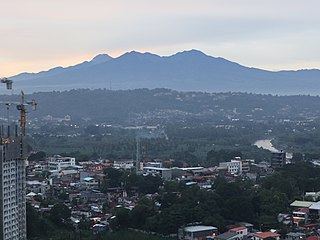
Mount Apo, also known locally as Apo Sandawa, is a large solfataric, dormant stratovolcano on the island of Mindanao, Philippines. With an elevation of 2,954 meters (9,692 ft) above sea level, it is the highest-mountain in the Philippine Archipelago, Mindanao and 24th-highest peak of an island on Earth. Located on the tripartite border of Davao City and Davao del Sur in the Davao Region, and Cotabato in Soccsksargen, Mount Apo is the most-prominent mountain in the Philippines. The peak overlooks from Davao City 45 kilometers (28 mi) to the northeast, Digos 25 kilometers (16 mi) to the southeast, and Kidapawan 20 kilometers (12 mi) to the west. It is a protected area and a Natural Park of the Philippines.
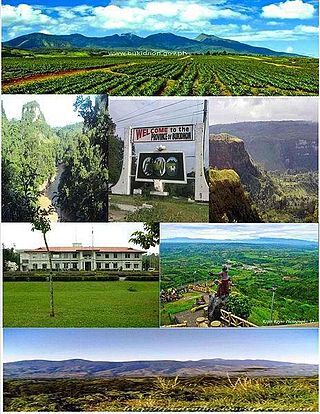
Bukidnon, officially the Province of Bukidnon, is a landlocked province in the Philippines located in the Northern Mindanao region. Its capital is the city of Malaybalay. The province borders, clockwise from the north, Misamis Oriental, Agusan del Sur, Davao del Norte, Cotabato, Lanao del Sur, and Lanao del Norte. According to the 2020 census, the province is inhabited by 1,541,308 residents. The province is composed of 2 component cities and 20 municipalities. It is the third largest province in the country in terms of total area of jurisdiction behind Palawan and Isabela respectively.

Davao del Norte, officially the Province of Davao del Norte, is a province in the Philippines located in the Davao Region in Mindanao. Its capital and largest city is Tagum. The province also includes Samal Island to the south in Davao Gulf.

Davao Region, formerly called Southern Mindanao, is an administrative region in the Philippines, designated as Region XI. It is situated at the southeastern portion of Mindanao and comprises five provinces: Davao de Oro, Davao del Norte, Davao del Sur, Davao Oriental, and Davao Occidental.

Davao de Oro, officially the Province of Davao de Oro, is a province in the Philippines located in the Davao Region in Mindanao. Its capital is Nabunturan. It used to be part of the province of Davao del Norte until it was made a separate province in 1998.

Monkayo, officially the Municipality of Monkayo, is a 1st class municipality in the province of Davao de Oro, Philippines. According to the 2020 census, it has a population of 93,937 people, making it the most populous town in the province.
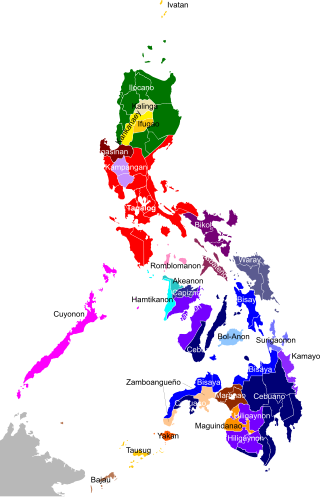
The Philippines is inhabited by more than 182 ethnolinguistic groups, many of which are classified as "Indigenous Peoples" under the country's Indigenous Peoples' Rights Act of 1997. Traditionally-Muslim peoples from the southernmost island group of Mindanao are usually categorized together as Moro peoples, whether they are classified as Indigenous peoples or not. About 142 are classified as non-Muslim Indigenous people groups, and about 19 ethnolinguistic groups are classified as neither Indigenous nor Moro. Various migrant groups have also had a significant presence throughout the country's history.

The Lumad are a group of Austronesian indigenous peoples in the southern Philippines. It is a Cebuano term meaning "native" or "indigenous". The term is short for Katawhang Lumad, the autonym officially adopted by the delegates of the Lumad Mindanao Peoples Federation (LMPF) founding assembly on 26 June 1986 at the Guadalupe Formation Center, Balindog, Kidapawan, Cotabato, Philippines. Usage of the term was accepted in Philippine jurisprudence when President Corazon Aquino signed into law Republic Act 6734, where the word was used in Art. XIII sec. 8(2) to distinguish Lumad ethnic communities from the islands of Mindanao.
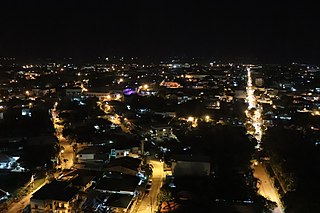
Metro Davao, officially Metropolitan Davao, is a metropolitan area in Mindanao, Philippines. It includes the cities of Davao, Digos, Mati, Panabo, Samal and Tagum and spanned parts of all five provinces of the Davao Region. Metro Davao is one of three metropolitan areas in the Philippines. It is administered by the Metropolitan Davao Development Authority. It is the largest metropolitan region by land area and the second most populous in the Philippines.

The United Church of Christ in the Philippines is a Christian denomination in the Philippines. Established in its present form in Malate, Manila, it resulted from the merger of the Evangelical Church of the Philippines, the Philippine Methodist Church, the Disciples of Christ, the United Evangelical Church and several independent congregations.

The indigenous peoples of the Philippines are ethnolinguistic groups or subgroups that maintain partial isolation or independence throughout the colonial era, and have retained much of their traditional pre-colonial culture and practices.
The Manobo are an indigenous people group from Mindanao in the Philippines, whose core lands cover most of the Mindanao island group, from Sarangani island into the Mindanao mainland in the regions of Agusan, Davao, Bukidnon, Surigao, Misamis, and Cotabato. The Manobo are considered the most diverse among the many indigenous peoples of the Philippines, with the largest number of subgroups within its family of languages. The Philippine Statistics Authority listed 644,904 persons as Manobo in its 2020 Census of Population and Housing.

The Pantaron Mountain Range, also called the Central Cordillera of Mindanao, Philippines straddles across the provinces of Misamis Oriental, Bukidnon, Agusan del Norte, Agusan del Sur, Davao del Norte and Davao del Sur. The range contains one of the last remaining old growth or primary forest blocks in Mindanao. Major rivers on the island also have their headwaters on the mountain range, including Mindanao River, Pulangi River, Davao River, Tagoloan River and major tributaries of Agusan River.
COVID-19 community quarantines in the Philippines were a series of stay-at-home orders and cordon sanitaire measures that were implemented by the government of the Philippines through its Inter-Agency Task Force for the Management of Emerging Infectious Diseases (IATF-EID).

Eufemia Campos Cullamat, also known as Ka Femia, is a Filipina farmer, activist, and politician. She was a member of the Philippine House of Representatives for the 18th Congress under the Bayan Muna party-list group. She is the second Manobo to serve in Congress after former Cotabato Representative Nancy Catamco.
Bai Bibyaon Ligkayan Bigkay was a Filipino Lumad leader and environmentalist. She was the first and only female chieftain in the history of the Manobo people and has been described as "Mother of the Lumads". She was an advocate of indigenous peoples' rights and had been a defender of Manobo ancestral lands and the Pantaron Mountain Range from 1994.
The Rano massacre, also known as the Digos massacre, refers to the aftermath of an incident which occurred in the village of Rano in Digos, Davao del Sur on June 25, 1989 which resulted to the death of 39 people. The New People's Army claimed responsibility for the deaths but insisted that anti-communist vigilantes among the victims fired at them first.
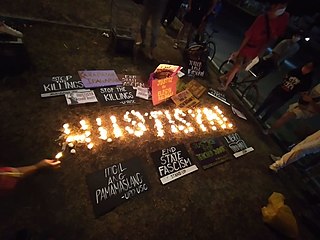
The New Bataan massacre occurred when five Lumad teachers and community workers and their two drivers were killed in Barangay Andap, New Bataan, Davao de Oro, Philippines, on February 24, 2022. The ones who were killed were Chad Booc, Gelejurain "Jurain" Ngujo II, Elegyn Balonga, Tirso Añar, and Robert Aragon—collectively termed as 'New Bataan 5'. Family members, advocacy groups and activists, and politicians have described the event as a massacre, while the Armed Forces of the Philippines asserted that what happened was an encounter between the forces of New People's Army (NPA) and the 10th Infantry Division of the AFP. The Communist Party of the Philippines (CPP) said that there were no NPA units in the area at the time of the event.

Chad Errol Ramirez Booc was a Filipino volunteer Lumad teacher. He was known as an activist vocal on-ground and in social media.
Tu Pug Imatuy is a 2017 Filipino drama film directed by Arnel Barbarona, produced by Red Motion Media and distributed by Solar Entertainment. The film stars Jong Monzon and Malona Sulatan in lead roles and had its world premiere at the 30th Tokyo International Film Festival on 26 October 2017. Inspired by actual events, the drama tackles the struggle of indigenous Manobos against environment plunder and the militarization of their communities.














